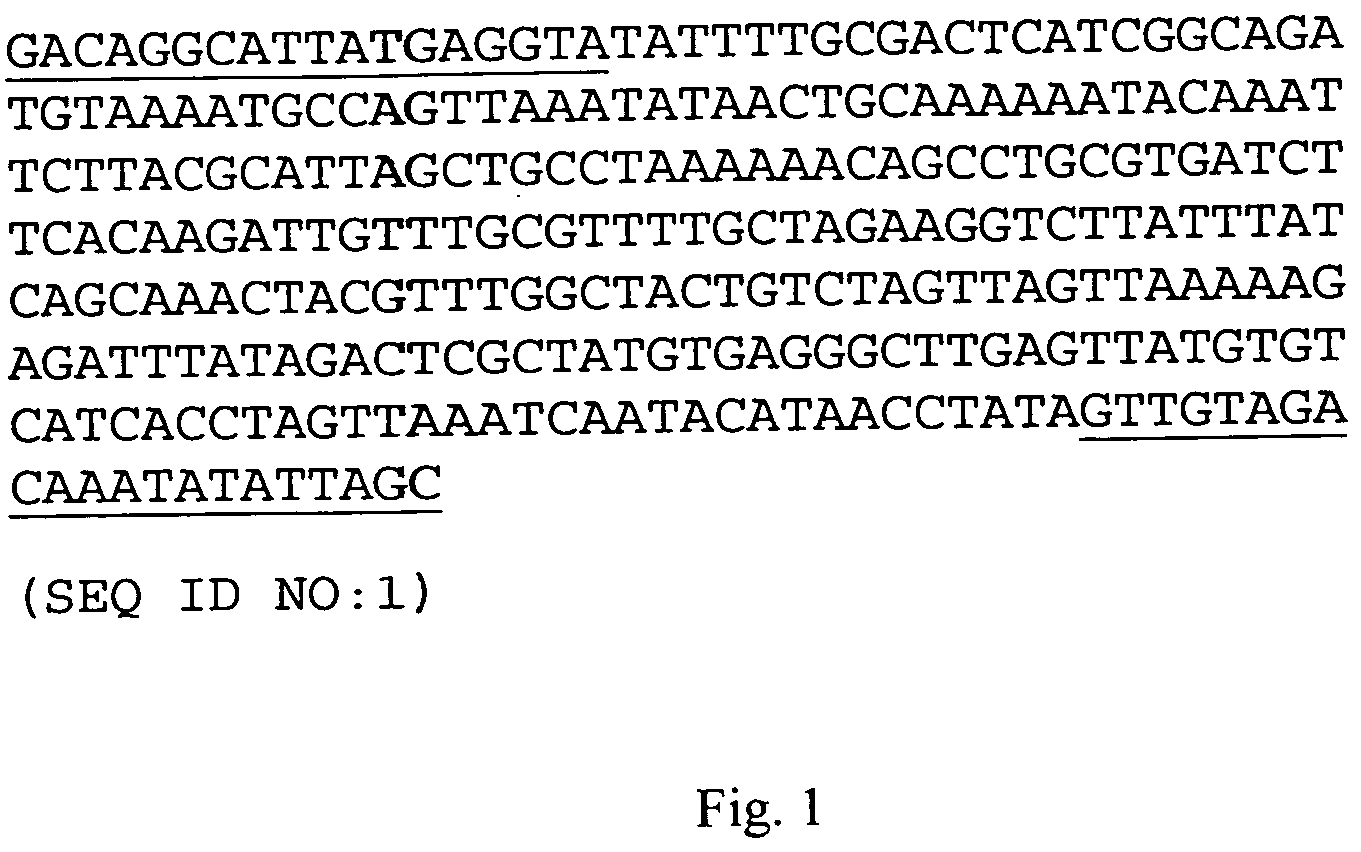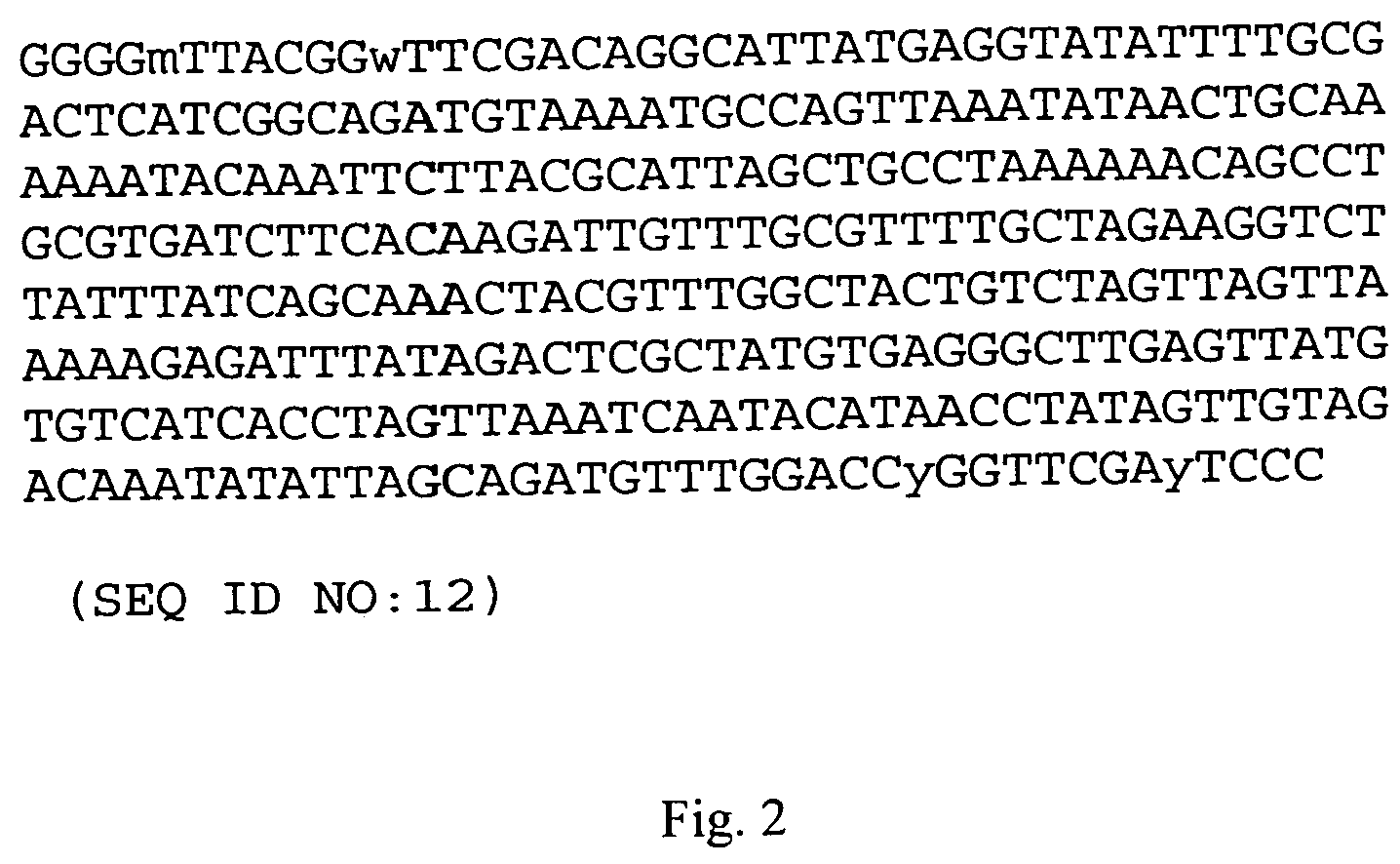Method for the detection of group B Streptococcus (GBS) (Streptococcus agalactiae) in mammals
a technology of streptococcus and gbs, which is applied in the field of detection of group b streptococcus (gbs) (streptococcus agalactiae) in mammals, can solve the problems of widespread use of antibiotics during labour, risks for mother and infant, and the practice of universal screening
- Summary
- Abstract
- Description
- Claims
- Application Information
AI Technical Summary
Benefits of technology
Problems solved by technology
Method used
Image
Examples
example 1
Collection of Specimens
[0116]Vaginal swabs from pregnant women (n=39) were sourced from the Department of Obstetrics and Gynaecology, University College Hospital Galway (UCHG), Ireland. Ethics consent was obtained from the Research Ethics Committee at UCHG. Duplicate vaginal swabs were collected into Amies transport medium (Sarstedt, Nümbrecht, Germany), transported to the laboratory at ambient temperature and stored at 4° C. until required.
[0117]Vaginal swab specimens from pregnant women (n=120) were purchased from The New England Life Science Group (NELSG) (Los Osos, Calif., USA), a clinical services organization.
[0118]These specimens were remnant swabs screened for GBS colonization by USA hospital laboratories as part of routine prenatal care. GBS was identified in these swabs at source by genital screen cultures or by selective GBS culture.
[0119]The remnant specimens were frozen within 1-3 days of sampling and shipped on dry ice to our laboratory. A proportion of 90% GBS-positiv...
example 2
[0148]Use of GBS tmRNA in an RNA-Based Assay
[0149]A two-step assay with an independent RT step was carried out using primer gbsU4R (SEQ ID NO: 3) followed by real-time PCR using gbsU3F (SEQ ID NO: 2) / gbsU4R (SEQ ID NO: 3) primers and FRET1 / 2 hybridization probe pair (SEQ ID NO: 4 / 5). The performance of this assay was evaluated using serial dilutions (109-10−1) of GBS cells from which RNA was extracted using the Ambion RNA kit. In parallel, crude lysates from serial dilutions (109-10−1) of GBS cells were generated using the IDI lysis kit (GeneOhm Sciences, Canada).
[0150]The performance of each method was assessed by including the extracted / released RNA in a GBS RT-real-time PCR assay as hereinabove described. The same limit of detection was achieved with both methods enabling 1-10 GBS cell equivalents to be detected.
[0151]The qualitative real-time PCR test according to the invention provides for the rapid detection of GBS (75 min. including sample preparation) and is capable of detec...
PUM
| Property | Measurement | Unit |
|---|---|---|
| Fraction | aaaaa | aaaaa |
| Fraction | aaaaa | aaaaa |
| Time | aaaaa | aaaaa |
Abstract
Description
Claims
Application Information
 Login to View More
Login to View More - R&D
- Intellectual Property
- Life Sciences
- Materials
- Tech Scout
- Unparalleled Data Quality
- Higher Quality Content
- 60% Fewer Hallucinations
Browse by: Latest US Patents, China's latest patents, Technical Efficacy Thesaurus, Application Domain, Technology Topic, Popular Technical Reports.
© 2025 PatSnap. All rights reserved.Legal|Privacy policy|Modern Slavery Act Transparency Statement|Sitemap|About US| Contact US: help@patsnap.com



